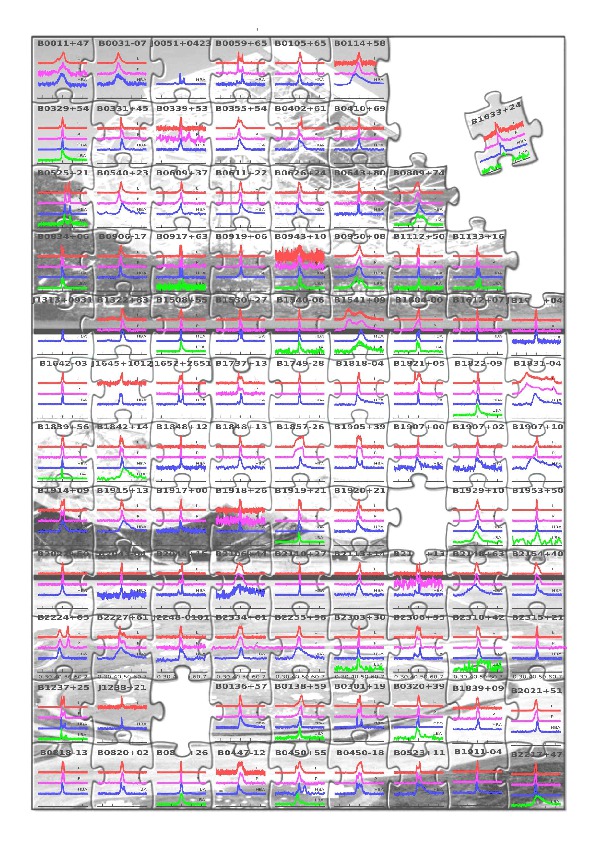Daily Image
03-11-2014Tackling the puzzle of pulsar emission with LOFAR
| Submitter: | Maura Pilia |
| Description: | We analyzed LOFAR observations of a sample of 100 radio pulsars (Pilia et al., submitted to A&A). LOFAR offers the unique capability of observing pulsars in a mostly unexplored range of frequencies: the 10-240 MHz range with large fractional bandwidth. We produced the cumulative pulse profiles of 100 pulsars in the 120-167 MHz range as well as the 15-63 MHz profiles for 25 of these pulsars. We performed a multi-frequency study of the profiles comparing the LOFAR observations with higher-frequency archival data, and following the profile evolution from 1400 MHz down to 15 MHz, where possible. We determined the relationship between this evolution and the geometry and astrometric parameters of the pulsar, or the external effects that alter the signal traveling towards us, which are prominent at lower frequencies. We followed the evolution of the full profile width and that of its single components, in case of multiple peaks; also in case of multiple peaks we traced the evolution of the ratio of the amplitudes of the two most prominent peaks. We found that the profile evolution with decreasing radio frequency does not follow a specific trend but, depending on the geometry of the pulsar, new components can enter into, or be hidden from, view. Nonetheless, in general our observations confirmed the widening of pulsar profiles at low frequencies, as expected from radius-to-frequency mapping or birefringence theories. We found good agreement of our data with the empirical core + cones model from Rankin (1983+) and the phenomenological model from Karastergiou and Johnston (2007). Credits: M. Pilia, J.W.T. Hessels, B.W. Stappers, J. van Leeuwen and LOFAR Pulsar Working Group |
| Copyright: | MP |
| Tweet |  |
